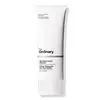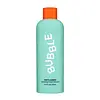What's inside
What's inside
 Key Ingredients
Key Ingredients

 Benefits
Benefits

 Concerns
Concerns

No concerns
 Ingredients Side-by-side
Ingredients Side-by-side

Water
Skin ConditioningBehenyl Alcohol
EmollientPolyglyceryl-2 Stearate
EmulsifyingGlycolipids
Skin ConditioningPentylene Glycol
Skin ConditioningPolyglyceryl-6 Dicaprate
EmulsifyingGlyceryl Stearate
EmollientStearyl Alcohol
EmollientDiutan Gum
Polyacrylate Crosspolymer-6
Emulsion StabilisingSodium Phytate
Phytic Acid
Trisodium Ethylenediamine Disuccinate
Sodium Benzoate
MaskingPhenoxyethanol
PreservativeChlorphenesin
AntimicrobialWater
Skin ConditioningCocamidopropyl Hydroxysultaine
CleansingBehenyl Alcohol
EmollientPolyacrylate Crosspolymer-6
Emulsion StabilisingPolyglyceryl-2 Stearate
EmulsifyingGlyceryl Stearate
EmollientPentylene Glycol
Skin ConditioningGlycolipids
Skin ConditioningSphingomonas Ferment Extract
Skin ConditioningAllantoin
Skin ConditioningCeramide NP
Skin ConditioningCeramide AP
Skin ConditioningCeramide EOP
Skin ConditioningPersea Gratissima Oil
Skin ConditioningSodium Phytate
Sodium Lauroyl Lactylate
EmulsifyingPolylysine
Phytosphingosine
Skin ConditioningCholesterol
EmollientSodium Methyl Cocoyl Taurate
CleansingXanthan Gum
EmulsifyingCarbomer
Emulsion StabilisingPhenoxyethanol
PreservativeStearyl Alcohol
EmollientCitric Acid
BufferingTrisodium Ethylenediamine Disuccinate
Polyglyceryl-6 Dicaprate
EmulsifyingEthylhexylglycerin
Skin ConditioningWater, Cocamidopropyl Hydroxysultaine, Behenyl Alcohol, Polyacrylate Crosspolymer-6, Polyglyceryl-2 Stearate, Glyceryl Stearate, Pentylene Glycol, Glycolipids, Sphingomonas Ferment Extract, Allantoin, Ceramide NP, Ceramide AP, Ceramide EOP, Persea Gratissima Oil, Sodium Phytate, Sodium Lauroyl Lactylate, Polylysine, Phytosphingosine, Cholesterol, Sodium Methyl Cocoyl Taurate, Xanthan Gum, Carbomer, Phenoxyethanol, Stearyl Alcohol, Citric Acid, Trisodium Ethylenediamine Disuccinate, Polyglyceryl-6 Dicaprate, Ethylhexylglycerin
 Reviews
Reviews

Ingredients Explained
These ingredients are found in both products.
Ingredients higher up in an ingredient list are typically present in a larger amount.
Behenyl Alcohol is a type of fatty alcohol (these are different from the drying, solvent alcohols).
Fatty Alcohols have hydrating properties and are most often used as an emollient or to thicken a product. They are usually derived from natural fats and oils; behenyl alcohol is derived from the fats of vegetable oils.
Emollients help keep your skin soft and hydrated by creating a film that traps moisture in.
In 2000, Behenyl Alcohol was approved by the US as medicine to reduce the duration of cold sores.
Learn more about Behenyl AlcoholGlyceryl Stearate is a mix of glycerin and stearic acid.
It is used to stabilize the mixing of water and oil ingredients. By preventing these ingredients from separating, it can help elongate shelf life. It can also help thicken the product's texture.
As an emollient, it helps soften skin and supports barrier-replenishing ingredients.
In cosmetics, Glyceryl Stearate is often made from vegetable oils or synthetically produced.
This ingredient may not be fungal-acne safe
Fun fact: The human body also creates Glyceryl Stearate naturally.
Learn more about Glyceryl StearateGlycolipids are natural, sustainable biosurfactants. They are both surfactants (cleansing agents) and emollients.
Made from lipids and sugars, in-vitro studies show glycolipids are a gentle alternative to conventional surfactants. They also possess foaming properties to give cleaning products a nice texture.
One manufacturer study found their glycolipid also demonstrated sebum reduction and helped reduced oiliness after four weeks. This means it can also be great for scalp care.
Learn more about GlycolipidsPentylene glycol is typically used within a product to thicken it. It also adds a smooth, soft, and moisturizing feel to the product. It is naturally found in plants such as sugar beets.
The hydrophilic trait of Pentylene Glycol makes it a humectant. As a humectant, Pentylene Glycol helps draw moisture from the air to your skin. This can help keep your skin hydrated.
This property also makes Pentylene Glycol a great texture enhancer. It can also help thicken or stabilize a product.
Pentylene Glycol also acts as a mild preservative and helps to keep a product microbe-free.
Some people may experience mild eye and skin irritation from Pentylene Glycol. We always recommend speaking with a professional about using this ingredient in your routine.
Pentylene Glycol has a low molecular weight and is part of the 1,2-glycol family.
Learn more about Pentylene GlycolPhenoxyethanol is a preservative that has germicide, antimicrobial, and aromatic properties. Studies show that phenoxyethanol can prevent microbial growth. By itself, it has a scent that is similar to that of a rose.
It's often used in formulations along with Caprylyl Glycol to preserve the shelf life of products.
Polyacrylate Crosspolymer-6 is a texture enhancer and pH adjuster.
It is be used to thicken water-based products and create a gel-texture with a velvet feel.
One manufacturer claims this ingredient to have a pH range of 2-8 and to be biodegradable.
Learn more about Polyacrylate Crosspolymer-6Polyglyceryl-2 Stearate isn't fungal acne safe.
We don't have a description for Polyglyceryl-6 Dicaprate yet.
Sodium Phytate is the synthetic salt form of phytic acid. Phytic acid is an antioxidant and can be found in plant seeds.
Sodium Phytate is a chelating agent. Chelating agents help prevent metals from binding to water. This helps stabilize the ingredients and the product.
Stearyl Alcohol is a type of fatty alcohol from stearic acid. It is a white, waxy compound used to emulsify ingredients.
Fatty Alcohols are most often used as an emollient or to thicken a product. Emollients help soothe and hydrate the skin by trapping moisture.
They are usually derived from natural fats and oils and therefore do not have the same drying or irritating effect as solvent alcohols. FDA allows products labeled "alcohol-free" to have fatty alcohols.
Learn more about Stearyl AlcoholTrisodium Ethylenediamine Disuccinate is used to help stabilize a product.
It is a chelating agent, meaning it helps prevent metal ions from binding to other ingredients. This prevents unwanted reactions in products. Metal ions can come into a product via the water ingredient. They are found in trace amounts and are not known to be harmful.
Water. It's the most common cosmetic ingredient of all. You'll usually see it at the top of ingredient lists, meaning that it makes up the largest part of the product.
So why is it so popular? Water most often acts as a solvent - this means that it helps dissolve other ingredients into the formulation.
You'll also recognize water as that liquid we all need to stay alive. If you see this, drink a glass of water. Stay hydrated!
Learn more about Water